Sri Dalada Maligawa commonly known as the Temple of the Sacred Tooth Relic, is a world-renowned place of worship in Kandy, Sri Lanka, where the left Canine tooth of Gautama Buddha is enshrined. The Sacred Tooth Relic, which is housed at the Temple of the Sacred Tooth Relic in the city of Kandy, is being considered and worshipped as the living Lord Buddha. The temple, which is venerated by thousands of local & foreign devotees daily, was named a World Heritage site by UNESCO in 1988.
It was in the early 18th century that King Vira Narendrasinhe built the present Kandy Sri Dalada Maligawa to deposit the sacred tooth relic of the Lord Buddha for protection. A simple complex in the beginning, many more additions were put in place by successive kings, as the relic quickly became a symbol of power and the right to rule the country. Since ancient times, the relic has played a vital role in local politics because it is believed that whoever holds the relic holds the governance of the country. To this very day, rituals and processions are organized to pay homage to the relic of the Lord Buddha.
Dalada Perahera, famously known as the Kandy Esala Perahera, held in the month of Esala (July) annually, is among them. It is considered the epitome of the country’s Buddhist celebrations and is blessed with divinity. Lord Buddha’s left canine tooth out of the four Tooth Relics was brought to Sri Lanka due to the continuous conflicts during the reign of King Mutaseewa in the kingdom of Kaalinga. Princess Hemamala and Prince Dantha brought the Tooth Relic to Sri Lanka during the reign of King Kithsirimewan, seeking protection for the Sacred Tooth Relic. This incident took place in 310 A.D.
Sri Dalada Maligawa is built in the city of Kandy near the ancient Royal Palace, which is situated to the north of the temple, and the forest reserve called “Udawaththa Kelaya” to the east. The famous Kandy Lake, also known as “Kiri Muhuda” to the south and “Natha & Paththini Devala” to the west,. The temple is adorned with intricate carvings using gold, silver, bronze, and ivory.
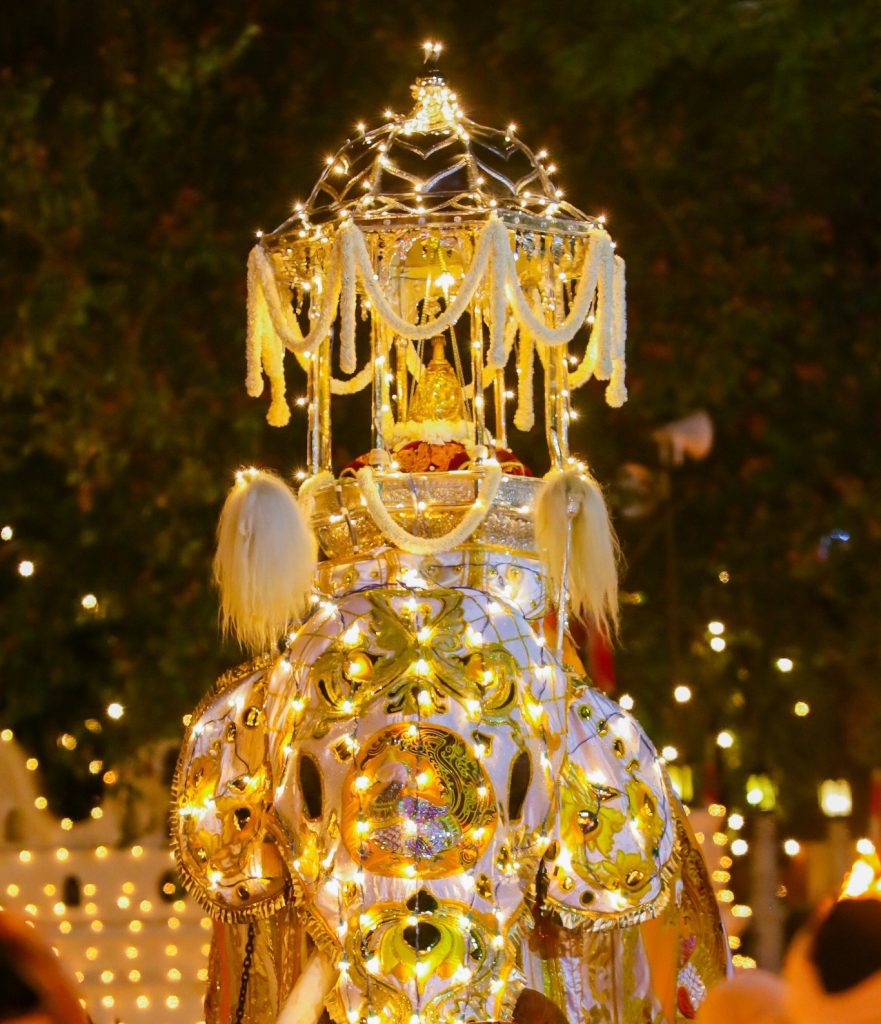
History of Sri Dalada Maligawa (Temple of the Sacred Tooth Relic)
According to Maha Parinibbana sutta of Deegha Chapter, among few other sacred relics, the four sacred tooth relics remained intact following Mahaparinirvana. According to Sri Lankan legends, when the Buddha died in 543 BC, his body was cremated in a sandalwood pyre at Kushinagar (Sinhala: කුසිනාරා හෙවත් කුෂිනගර්), and his left canine tooth was retrieved from the funeral pyre by his disciple, Khema. Khema then gave it to King Brahmadatte for veneration. It became a royal possession in Brahmadatte’s country and was kept in the city of Dantapura (modern-day Dantapuram).
Khema (Pali: Khemā; Sanskrit: Kṣemā) was a Buddhist bhikkhuni, or nun, who was one of the top female disciples of the Buddha. She is considered the first of the Buddha’s two chief female disciples, along with Uppalavanna.
Dantapuram is a small village in Srikakulam district of Andhra Pradesh. Known as Buddhas Tooth at Dantapura, the capital of the Kalingas.
The ancient city of Kushinagar is the final resting place of Gautama Buddha and thus is considered to be the most important pilgrim spots for the Buddhist followers. Kushinagar, where Buddhists believe Gautama Buddha attained parinirvana.
The four canine teeth were said to have been separately enshrined and worshipped. The right canine was worshipped in the heavenly domain of the king of gods, Sakra, while another was worshipped by the king of Gandhara in modern Pakistan. The third was taken away by the Nagas and worshipped, placing it in a golden shrine room. The fourth, the left canine, was removed from the funerary ashes by a monk and handed over to the king of Kalinga in Eastern India, as recorded in the Digha Nikaya.
The Tooth Relic of the Kalinga became an object of great veneration by generations of Kalinga kings until it earned the wrath of Brahmanical followers, and consequently, several attempts were made to destroy the relic by the fanatical rulers. Yet the tooth relic was miraculously saved from such atrocities. For this reason, the kings of other states attempted to possess the tooth relic for personal veneration. Thus, from the beginning, the tooth relic came to be considered an important symbol of veneration. The last Indian ruler to possess the Tooth Relic was Guhasiva of Kalinga (c. 4th century AD).
A belief grew that whoever possessed the tooth relic had a divine right to rule that land. The Dāṭhāvaṃsa recounts the tale of a war fought over the relic 800 years later between Guhasiva of the republic of Kalinga and a king named Pandu. The final attempt made by a neighboring state to make war with Guhasiva for the possession of the tooth relic caused this venerated relic to leave the Indian shores. By this time, Buddhism was well rooted in Sri Lanka, and the island rulers maintained close relations with the Indian states that fostered Buddhism. Apparently, it was for this reason that the Kalinga ruler, in imminent danger of losing in battle, decided to send the Tooth relic to his friend, the Sri Lankan king.
After about eight centuries of its existence in India, the Tooth relic was secretly taken away by Danta and Hemamala, said to be the son-in-law and daughter of Guhasiva. The literary works like Dathuvamsa, Daladasirita, and the chronicle Mahavamsa, record many and varied vicissitudes that the couple went through en route to Sri Lanka in order to safeguard the relic. It is recorded that the prince and the princess donned the garb of ascetics and carried the Relic hidden within the coiffure of Hemamala so as not to be noticed by passersby. A twentieth-century wall painting of the well-known monastery of Kelaniya (about 5 miles east of Colombo), depicts this episode in a classic style executed by a local artist (Solius Mendis).
Danta and Hemamala were said to have embarked on a ship at the ancient port of Tamralipti, a busy port at the time, located at the mouth of the river Ganges, and reached the shores of Sri Lanka at the port of Lankapattana (modern Ilankeiturei) in the Trincomalee District. The Relic was reported to have performed several miracles en route on the ship itself, thus being venerated by human and superhuman beings. The Tooth Relic Tooth Relic finally reached the Sri Lankan capital, Anuradhapura, and according to the Sinhala text, Dalada Sirita, the Relic was kept at the Megagiri vihara in the park Mahameghavana.
At the time of its arrival, the Indian ruler Guhasiva’s friend, King Mahasena, had passed away, and his son, King Kirti Sri Meghavanna (4th century AC), who himself was a pious Buddhist, had succeeded him. The chronicle Mahavamsa reports that the King, with great faith had the Tooth Relic enshrined in the edifice called Dhammacarya-geha, originally built by King Devanampiyatissa in the 3rd century BC, within the royal enclosure (Rajavatthu). The king built a special shrine and enshrined the tooth Relic therein. This shrine has now been identified as the ruined edifice lying almost next to the great refectory known as Mahapali.
Following the arrival of the Sacred Tooth Relic, it was first housed in the Isurumuniya Temple and was honoured and worshipped with Dalada Perahera by King Kithsirimewan. It was so splendid that it left the King Kithsirimewan and the country men with amazement and awe. They made it an annual event performed in Anuradhapura kingdom with the anticipation of timely rain and good harvest.
Safeguarding the relic was the responsibility of the monarch from then on. Over the years, the custodianship of the relic came to symbolize the right to rule the island. Therefore, reigning monarchs built the tooth relic temples quite close to their royal residences, as was the case during the times of the Anuradhapura Kingdom, Kingdom of Polonnaruwa, and Kingdom of Dambadeniya.
The background for the current street parading Dalada Perahera was set on those circumstances. No matter how the king was crowned, if he did not obtain the guardianship of the Sacred Tooth Relic, which has the miraculous power of giving timely rain and good harvest, in the eyes of the country men he was not regarded as the true leader with sovereignty.
During the kingdoms of Anuradhapura, Polonnaruwa, Dambadeniya, Yapahuwa, Kurunegala, Gampola, Kotte, Seethawaka and Kandy annual Dalada Perahera was performed as a showcase of the guardianship of the Sacred Tooth Relic along with all rituals and Poojas. Even though King Wimaladharmasooriya I was crowned, he was not considered as the true king among the country men since he did not have the guardianship of the Sacred Tooth Relic. Hence, plenteous attempts were done by him to bring the sacred tooth relic to the kingdom of Senkadagala (now Kandy).
Later on, under the protection of Dewanagala Rathnalankara Thero, the Sacred Tooth Relic was secretly brought from Sabaragamuwa Delagamuwa Maha Viharaya to Kandy via Uva province and was first placed in the Gedige Viharaya in Asgiriya, Kandy. According to the tales of history, a grandeur temple was built for the Sacred Tooth Relic in the premises of the Royal palace. As a result, the Temple of Tooth Relic in Kandy was established.
While in Kandy the last Kingdom the Temple of the Sacred Tooth Relic continues to be the greatest shrine to receive the utmost veneration of the Buddhist world. The first “Dalada Madura” in Kandy, which housed the Sacred Tooth Relic was built by King Wimaladharmasuriya the first during his reign from year 1592 – 1604. History reveals that this was destroyed by the Portuguese during their invasions. The second temple was built in the same location by King Rajasinghe the Second during his reign from 1635 – 1687, which was burnt by the Dutch.
The Dalada history says in year 1687 King Wimaladharmasuriya the Second built a 3 storeyed Dalada Madura and performed Dalada rituals with great devotion but with time the building was decayed and destroyed. Later his son King Sri Veera Parakrama Narendrasinghe who reigned from 1707– 739 built the 2 storeyed Dalada Madura which one can see today. The South Indian Kings who ruled the country from Senkadagala renovated and protected the shrine which was built by King Narendrasinghe.
The temple was finely renovated and beautified by King Keerthi Sri Rajasinghe to its present appearance. Paththirippuwa or the Octagonal Pavilion was constructed by King Sri Wickrama Rajasinghe who reigned from year 1798 – 1815. Protecting of the Sacred Tooth Relic and conducting religious rituals without a break is being carried out to the present day under the strict surveillance of the three chief custodians of the Tooth Relic, the most Venerable Mahanayake theros of Malwatta and Asgiriya chapters and the lay custodian, the Diyawadana Nilame.
Reference: Sri Dalada Maligawa | Wikipedia
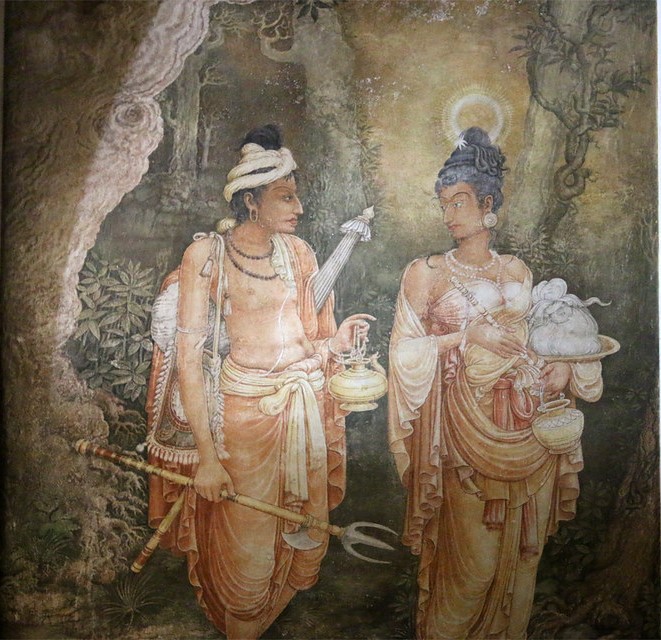
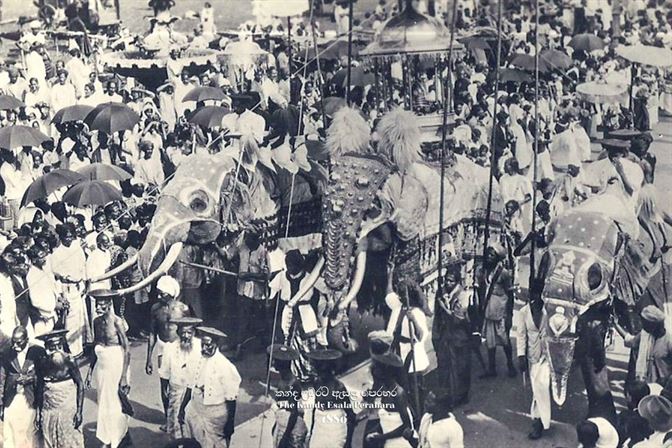
Sri Dalada Maligawa Kandy
Built : King Vimaladharmasuriya I
King Vimaladharmasuriya I built a two-storey building to deposit the tooth relic and the building is now gone. In 1603 when the Portuguese invaded Kandy, it was carried to Meda Mahanuwara in Dumbara.
Recovered : King Rajasinha II
It was recovered in the time of Rajasinha II and it has been reported that he reinstated the original building or built a new temple.
Reconstruction : King Sri Vira Parakrama Narendra Singha
The present-day temple of the tooth was built by Vira Narendra Sinha.
Added : King Sri Vikrama Rajasinha
The octagonal Paththirippuwa and moat were added during the reign of Sri Vikrama Rajasinha. The royal architect Devendra Moolacharya is credited with building the Paththirippuwa. Originally it was used by the king for recreational activities and later it was offered to the tooth relic, it now houses the temple’s library.
Watch Kandy Esala Perahera (Dalada Perahera)
Dalada Perahera, famously known as the Kandy Esala Perahera, one of Sri Lanka’s most famous religious festivals, takes place every year in the full-moon month of Esala (July), coinciding with July/August. Every year, the vibrant city of Kandy in Sri Lanka comes alive with a cultural extravaganza known as the Kandy Esala Perahera. This 10-day festival is a celebration of great significance as it pays homage to the Sacred Tooth Relic of Buddha, which is enshrined at the magnificent Sri Dalada Maligawa in Kandy.
The Sacred Tooth Relic, which is housed at the Sri Dalada Maligawa in the city of Kandy, is being considered and worshipped as the living Lord Buddha. For this very reason, there are daily, weekly, and annual poojas and rituals. It is considered the epitome of the country’s Buddhist celebrations and is blessed with divinity. Kandy Esala Perahera stands as a captivating testament to Sri Lanka’s deep-rooted traditions that transcend time, connecting past and present through its vibrant processions and revered relics.
Kandy Esala Perahera’s grandeur, with its majestic elephants, resounding drummers, traditional dancers, and fire performers, leaves a lasting impression on all who witness it. The grand procession winds its way through the streets of Kandy, creating a captivating spectacle that attracts both locals and tourists from around the world. The festival lasts for 10 consecutive nights, with each night’s procession becoming increasingly grand and awe-inspiring.
The main purpose of Kandy Perahera is to pay tribute to the Sacred Tooth Relic of Buddha, which holds immense religious and historical significance to the people of Sri Lanka. During the festival, the Sacred Tooth Relic is paraded on the back of a majestic tusker elephant, adorned with a magnificent golden casket. Indeed, this sacred procession is the highlight of the entire festival and is considered a great honour to witness.
Sri Lanka’s annual celebrations of the Kandy Perahera should definitely be on your bucket list when visiting the beautiful island. If you plan to visit Sri Lanka during the months of July and August, to witness the Kandy Esala Perahera, it is important to dress modestly and behave with reverence throughout the festival. All visitors are encouraged to wear light and comfortable clothing, as the festival can last for several hours each night. The significance of Kandy Esala Perahera extends far beyond the city of Kandy, attracting visitors from across the globe who come to immerse themselves in the magic and spiritual essence of this extraordinary festival.
The tradition of Kandy Dalada Perahera, which was based on Buddhist values, respect and kindness, combined with rituals of Devala, prioritizing the ultimate humanity. The Kandy Esala Perahera Casket which is considered as living Lord Buddha which parades the streets is worshipped by the divinity, humanity and elephants. This is considered to be the oldest cultural event in the world and continues with its colourful and glamorous splendour making it an out of this world experience.
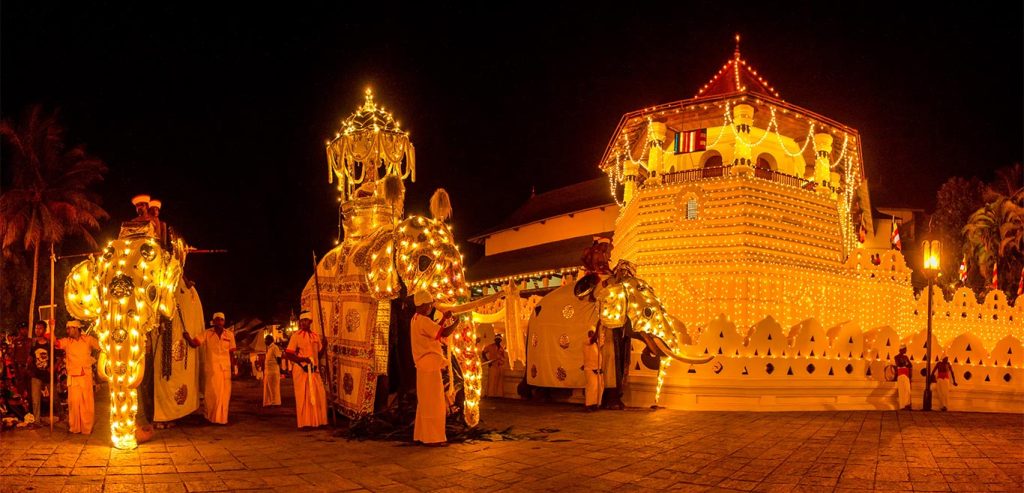
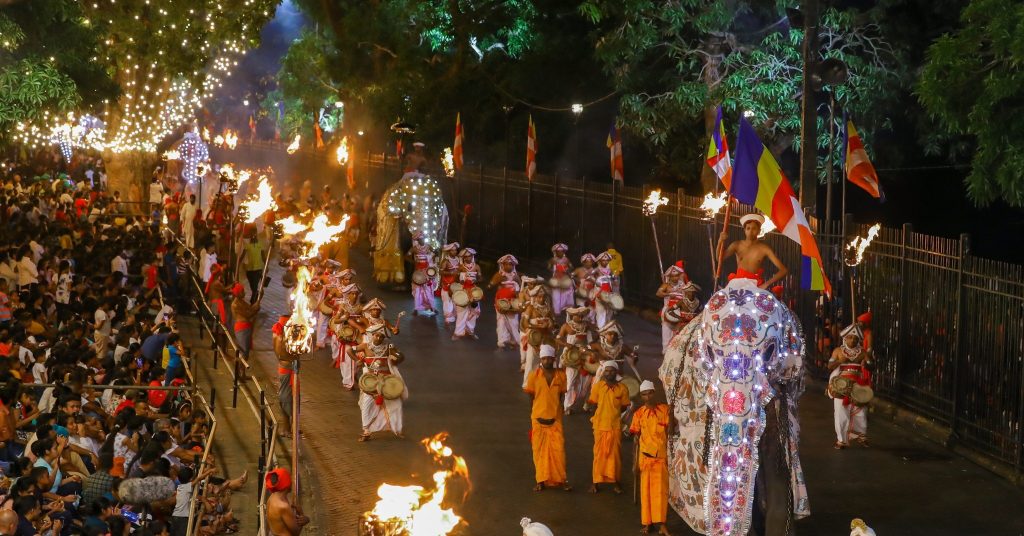
How to reach Sri Dalada Maligawa?
From Colombo to Sri Dalada Maligawa is situated 148km away. You can choose easy way to reach Sri Dalada Maligawa. See the map.
Important Information
- Sri Dalada Maligawa Address: Sri Dalada Veediya, Kandy 20000, Sri Lanka
- Contact Number: +94-812234226
- Timing: 05:30 am – 08:00 pm
What are the times of rituals (Thewawa)?
- Early Period of Service: 5.30 a.m. to 7.00 a.m.
- Middle Period of Service: 9.30 a.m. to 11.00 a.m.
- Evening Period of Service: 6.30 a.m. to 8.00 p.m.
Kandy Sri Dalada Maligawa Entrance Ticket Prices
Foreigners can buy tickets at the Sri Dalada Maligawa from the ticket-issuing machines available at the entrance.
- Adult – 15 years and above 15 years
- Children – below 15 years
- Toddler – below 6 years
Includes: Tooth Relic Temple| Dalada Museum | World Buddhist Museum |Tusker Museum
| Non-SAARC foreign adult | 2000 LKR |
| Non-SAARC foreign children | Free Entry |
| SAARC foreign adult | 1500 LKR |
| Thailand & Myanmar adult | 1500 LKR |
| Thailand & Myanmar Children | Free Entry |
| SAARC foreign children | Free Entry |
| Local adults | Free Entry |
| Local children | Free Entry |
| All infant and toddler | Free Entry |
In this book, you will find the History and Architecture of the Temples which housed the Sacred Tooth Relic in different parts of the country, beginning with Anuradhapura, where it was initially housed after Princess Hemamala and Prince Danta brought it from the Kalinga country in India in the 4th century AD during the reign of Kirti Sri Meghavanna. Since then the Sacred Tooth Relic was moved to various places, depending on the security situation in the island, till the Sacred Tooth Relic was brought finally to Senkadagalapura (now Kandy) in the 16th century during the reign of Vimaladharmasuriya I and housed in the Śrī Daḷadā Māligāva in Kandy. All these places where the Sacred Tooth Relic was housed, have been depicted in detail with photographs and illustrations to complement the text.
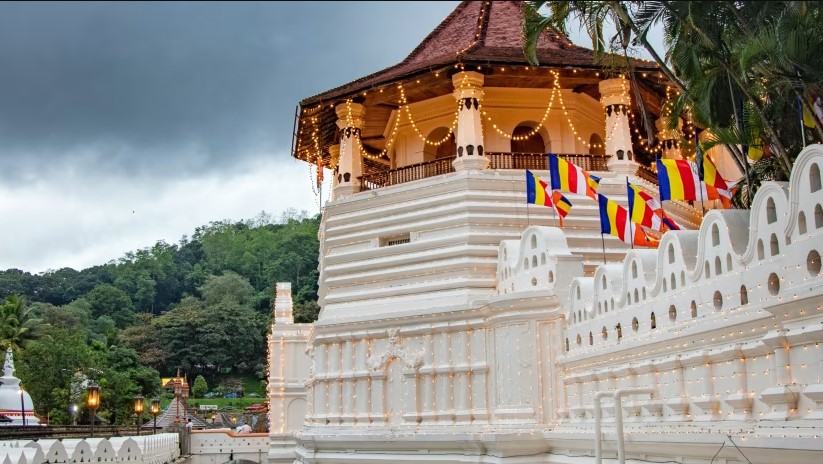
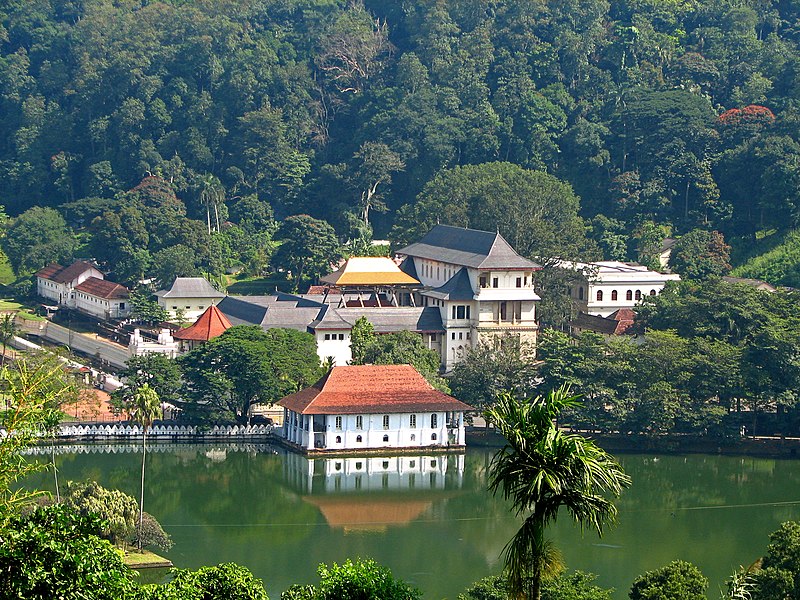
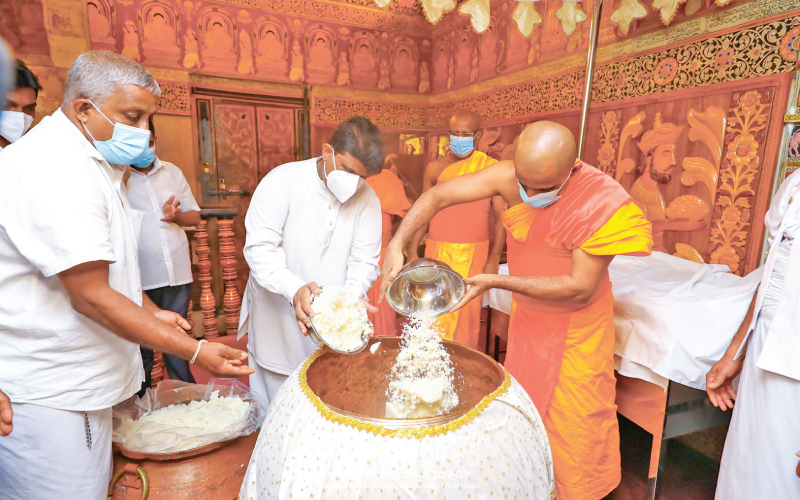
For More Blog Posts: Click Here
Affiliate Disclosure: As an Amazon Associate, I earn from qualifying purchases. This blog post may contain other affiliate links as well by which I earn commissions at no extra cost to you.

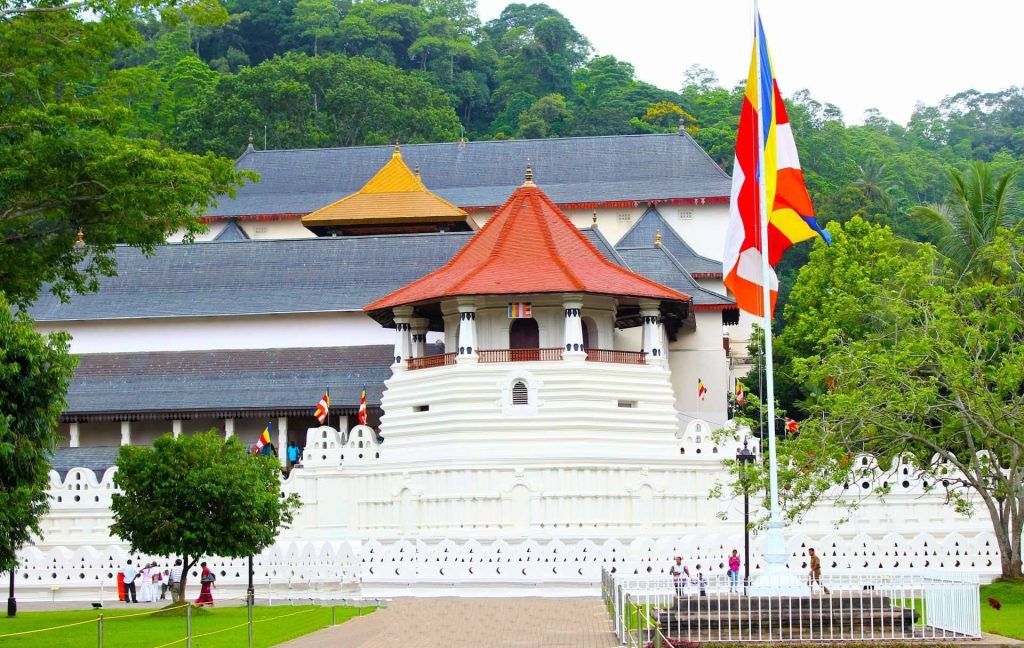
I have recently started a site, the information you provide on this site has helped me tremendously. Thanks for all of your time & work.